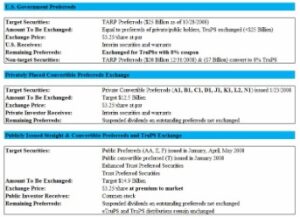
A well-prepared invoice, with important information that is documented and conveyed clearly and concisely, is an essential building block of effective AR management. This content is for information purposes only and should not be considered legal, accounting, or tax advice, or a substitute for obtaining such advice specific to your business. No assurance is given that the information is comprehensive in its coverage or that it is suitable in dealing with a customer’s particular situation. Intuit Inc. does not have any responsibility for updating or revising any information presented herein. Accordingly, the information provided should not be relied upon as a substitute for independent research. Intuit Inc. does not warrant that the material contained herein will continue to be accurate nor that it is completely free of errors when published.
Creating payment terms for accounts receivable

Depending on the agreement between company and client, the payment might be due in anywhere from a few days to 30 days, 60 days, 90 days, or, in some cases, up to a year. At some point along the way, interest on the debt might also begin to accrue. To address these issues, businesses need to implement a structured and agile AR management system. First, ensure that invoices are sent out promptly and in line with agreed payment terms.
Tips to improve your accounts receivable process
- Businesses need structured accounts receivable management to combat them.
- Intuit Inc. does not warrant that the material contained herein will continue to be accurate nor that it is completely free of errors when published.
- Outsourcing can also bring in expertise that leads to a more efficient process and improved performance.
- If you have an overdue invoice, you can send reminders to encourage prompt payment.
- Accounts receivable is listed on the company’s balance sheet as a current asset.
- Take your accounts receivable management processes to create team capacity by removing manual processes, and gain critical decision intelligence to drive value.
They do not provide the business with the latest features in data-based management or offer them the fastest and most efficient means of processing information. That is, they reference a financial resource that can be converted to cash in the near future, once the customer has paid. Use a documented process to monitor accounts receivable, and to increase cash collections, so you can operate your business with confidence.
What Is the Journal Entry for Accounts Receivable?
Here we’ll go over how accounts receivable works, how it’s different from accounts payable, and how properly managing your accounts receivable can get you paid faster. The allowance for doubtful accounts is also recorded as a contra account free resources for nonprofits with accounts receivable on your company’s balance sheet. The management makes an estimate in respect of the amount of accounts receivable that will never be collected from the customers. This estimate is then recorded as allowance for doubtful accounts and is used to offset accounts receivable.
By offering a range of payment options, you enhance convenience for your customers, eliminating the need for them to disrupt their daily routines to fulfill payment obligations. Secondly, pay attention to the tone of your communication when sending invoices. Maintain a clear, concise, and polite approach in both the invoice content and accompanying email communication. Avoid clutter and ensure all necessary details are included for a smooth payment process. Jami Gong is a Chartered Professional Account and Financial System Consultant.
Adam received his master’s in economics from The New School for Social Research and his Ph.D. from the University of Wisconsin-Madison in sociology. He is a CFA charterholder as well as holding FINRA Series 7, 55 & 63 licenses. He currently researches and teaches economic sociology and the social studies of finance at the Hebrew University in Jerusalem. HighRadius offers powerful, cloud-based Order to Cash software to automate and streamline financial operations. The goal is to have a lower percentage of Accounts Receivable remain open.
Accounts receivable is any amount of money your customers recession-proof owe you for goods or services they purchased from you in the past. This money is typically collected after a few weeks and is recorded as an asset on your company’s balance sheet. As a seller, you must be careful when extending trade credit to your customers, as you run the risk of non-payments attached to accounts receivables. The customers who may not pay for the goods sold to them are then recorded as bad debts in the books of accounts. Accounts receivable is deemed an asset because it is an outstanding balance that you are yet to receive from your customers. Accordingly, this unpaid balance in the accounts receivable account forms part of the current assets section on your company’s balance sheet.
So, the allowance for doubtful accounts helps you to understand how much amount you need to collect from your debtors. In other words, the credit balance in the allowance for doubtful accounts tells you the amount that is to be collected from your credit customers. As a business you’ll typically be selling goods on credit to your customers. This means, you deliver goods or render services, send the invoice, and get paid for them at a later date. Many larger companies have entire accounts receivable departments in charge of billing.
Where Do I Find a Company’s Accounts Receivable?
When recording accounts receivable, you want to post the revenue in the month you earn it. This will keep your accounting records accurate and consistent with accrual accounting. A typical aging schedule groups invoices four options to finance a real estate investment by their number of days outstanding, such as 0-30 days, days, days, and over 90 days. One of the best ways to streamline receivable management is to automate it. It will help you manage global nuances, get accurate insights into customer behavior, and benefit from differentiated functionalities for timely and speedy collections.